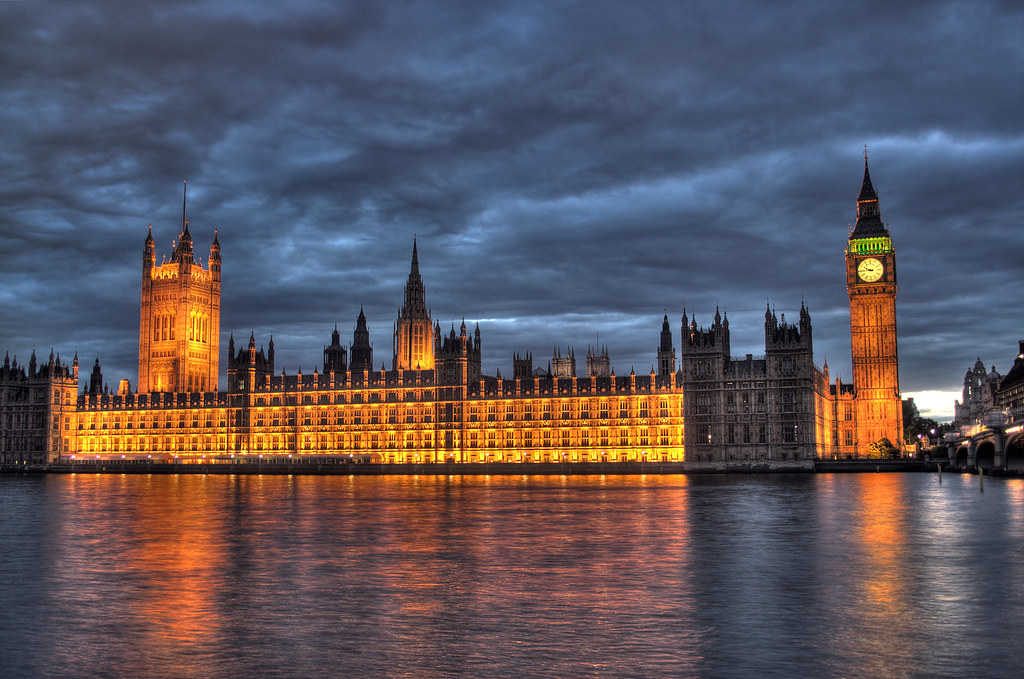Brexit Endgame: British Parliament Faces Naked Protestors, a Leaky Roof, and Another Extension
This post originally appeared on Order from Chaos.

Published by The Lawfare Institute
in Cooperation With

This post originally appeared on Order from Chaos.
A week before the new Brexit deadline of April 12, there is still no deal. After the British Parliament failed to reach agreement for a second time on alternative approaches, Prime Minister Theresa May sought to break the logjam by offering to negotiate a compromise with Labour leader Jeremy Corbyn. In advance of an April 10 emergency meeting of European leaders, May has requested another extension. Although European Union leaders are likely to grant a further delay, there are competing views by May, Parliament, and EU leaders about its length and conditions.
Didn’t the Brexit deadline already pass?
Yes, but a new one was set. March 29 was the initial deadline for the U.K. to leave the EU. Given the lack of progress in London, EU leaders agreed at the European Council summit on March 21 to May’s request for an extension. If the British Parliament had passed the withdrawal agreement by March 29, it would have had until May 22 to complete legislative preparations for the United Kingdom’s departure. As this did not occur, April 12 became the new deadline; EU leaders asked May to indicate a way forward before this date for their consideration.
Will Brexit be delayed again?
Yes, most likely—but the question is for how long and under what conditions. On April 5, May sent a letter to European Council President Donald Tusk requesting an extension until June 30—two days before the newly elected European Parliament first meets. She explained that additional time was needed for members of Parliament (MPs) to find a unified approach, approve the withdrawal agreement, and pass implementing legislation. Accepting the EU’s demand that the U.K. participate in European Parliament elections in late May if it is still a member, the prime minister pledged to introduce the requisite statutory instrument to prepare for polls (required in domestic law by April 12); however, she expressed hope the U.K. will have left the EU by then.
The problem? The EU considered and rejected this date when May requested it last month. In contrast, Tusk has proposed a “flextension”: a 12-month extension with the option for the U.K. to leave sooner if Parliament ratifies the deal. Leaders will debate these proposals at an emergency summit in Brussels on April 10. Tusk’s proposal is controversial in London, as Brexiteers fear their desired departure could be stymied. As a result, May could be hoping EU leaders make the politically difficult decision for her. It is also divisive among EU leaders: Although they want to be helpful and much prefer the U.K. leaving with a deal rather than no deal (as conveyed by German Chancellor Angela Merkel), they are averse to repeated requests for extensions, tired of being held hostage by London politics, and question the purpose of additional time (as expressed by French President Emmanuel Macron).
What does the British Parliament Want?
It was another dramatic week in the British Parliament. On April Fools Day, MPs held a second round of indicative votes to assess support for alternative approaches. Debate was briefly interrupted by naked protesters concerned about climate change, who “glued their bums to security glass” in the visitor gallery, provoking cheeky commentary from some MPs. All four motions were defeated. As before, the proposal for a customs union garnered the closest result (defeated 273-276) while a second referendum received the most votes (280-292). MPs also voted against closer economic alignment with the EU (261-282) and the prevention of a no-deal Brexit (191-292). The abstention of cabinet ministers as well as some members for tactical reasons complicated efforts to ascertain parliament’s true preferences. This was further hindered by Remainers’ adherence to their primary objective; notably, key supporters of a second referendum (including the Scottish National Party, most Liberal Democrats, and some Labour MPs) failed to back a customs union.
On April 3, backbenchers once again seized control of the agenda and forced through a bill in less than a day. A cross-party group (led by Labour MP Yvette Cooper and Conservative MP Oliver Letwin) introduced legislationthat would compel May to consult Parliament over the length of an extension. (The initial draft, which required May to prevent a no-deal Brexit by asking the EU for an extension, was pre-empted by her April 2 announcement.) On the bill’s first reading, Labour’s Hillary Benn introduced an amendment allowing MPs to take another series of indicative votes on April 8. The vote was tied, with Speaker John Bercow casting the deciding vote in support of the government; ironically, he said this scenario last occurred in a 1993 vote on the Maastricht treaty bill. The final bill passed just before midnight by one vote. Some Brexiteers blamed the support of Fiona Onasanya, a former Labour and now independent MP; critics suggest she should have resigned after serving a one-month jail sentence for repeatedly lying to avoid a speeding charge. The Lords then took up the bill, which could be ratified early next week. The government warned that if the EU agrees to an alternative deadline to the one May proposed, the bill would require May to seek Parliament’s approval—the day after the EU summit.
Parliament was suspended on April 4 when a roof leak drowned out debates on tax policy. Illusionist Uri Geller, who previously threatened to use his psychic powers to prevent Brexit, claimed responsibility.
Is a cross-party deal possible?
On April 2, May emerged from seven hours of divisive cabinet meetings—including awareness of legislative efforts to force her government to request an extension—and announced a new plan. The statement marked an evolution in her approach. Despite previously expressing openness to a no-deal Brexit (as desired by hardliners), she said “leaving with a deal is the best solution.” Acknowledging that Parliament was not passing her deal or finding alternatives, May offered talks with the Labour leader to find a compromise. She accepted the EU’s refusal to renegotiate the withdrawal agreement, which means the backstop remains. She cited the need to address the U.K.’s future relationship with the EU, which means focusing on the political declaration and likely accepting a softer form of Brexit. If the party leaders fail to agree on a unified approach, May proposed another round of indicative votes; notably, she agreed the government would be bound by parliament’s decision. May concluded the U.K. needed a further extension, but she expressed hope the process could be finished before May 22 so Britain would not need to hold European Parliament elections.
Despite several days of negotiations, the party leaders and their teams have thus far failed to reach a compromise. This strategy presents risks for both parties, which are deeply divided. Two ministers quit amid euroskeptic outrage at May’s cross-party outreach. Corbyn has been advocating a customs union with access to the single market, as well as regulatory alignment in areas such as workers’ rights and the environment. Although some Conservative MPs and ministers would object, this may ultimately be manageable in the party. The Labour team worries a future Conservative prime minister, especially if a Brexiteer replaces May, could renege on any guarantees for a softer Brexit in negotiations with the EU. Corbyn must also decide whether to insist on a confirmatory referendum: talks could collapse if he does, but his party may rebel if he does not (notwithstanding a letter from 25 Labour MPs representing Leave-supporting constituencies warning him against a second vote).





